Study | Trends in Audience Behavior: Have Theatre Audiences Rebounded?

Jennifer Sowinski Nemeth
Senior Consultant
Recently, JCA Arts Marketing had the privilege to attend the Spring 2023 LORT (League of Regional Theatres) Meeting to present on current data trends in the theatre industry. In addition to presenting data from our recent Subscription Study, we also collected data from several of our theatre clients so that we could present a theatre-specific update to our 2022 Season Trends study. For this mini-study, we collected data from six theatre organizations in late-March and early-April. Data from these organizations was pulled using the RMA.
The data revealed some interesting and surprising findings. The first key finding is that, on a per-performance basis, tickets and revenue have largely rebounded. Theatres are seeing only a 5% drop in tickets sold and a 1% drop in revenue per performance compared to 2018-19. However, those same theatres are producing far fewer performances than they were pre-pandemic, which means that overall ticket sales and revenue are still significantly down.
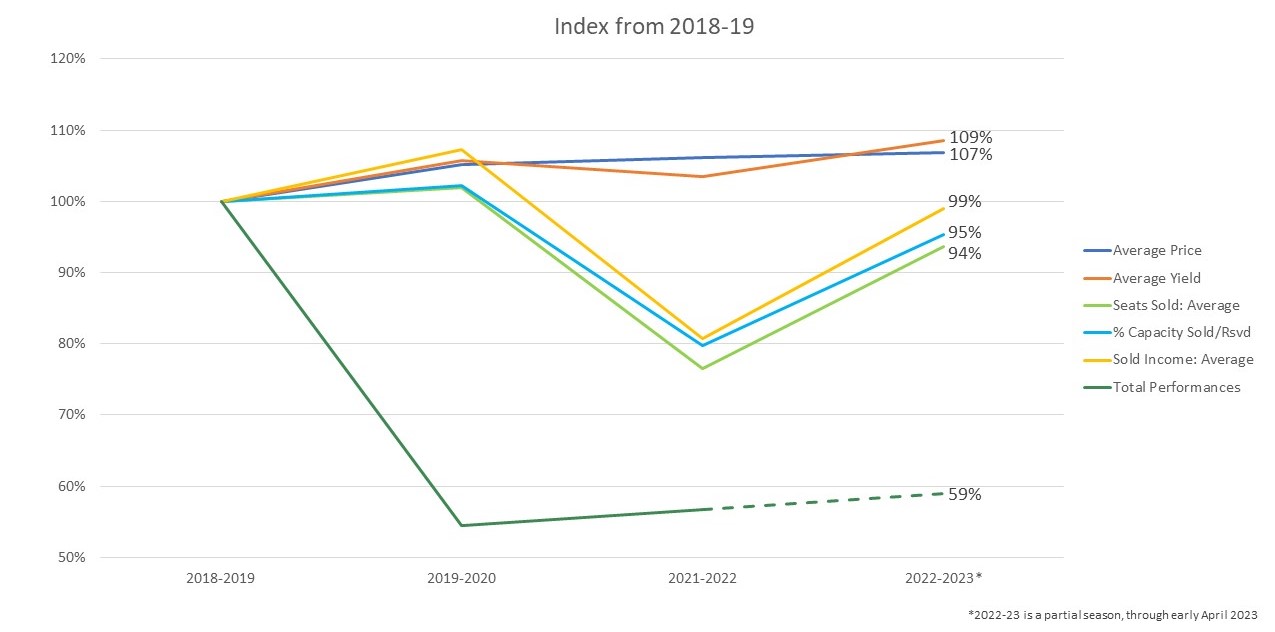
With the drastic decrease in total ticket sales, many theatres have placed a renewed focus on who is attending performances–is it primarily new buyers, or are they reactivating buyers who have attended before? We examined those numbers and found that over half of audiences since reopening after the pandemic are new to the organization. This is good news for the potential of audience growth and development. At the same time, it’s critical for marketers to understand, as it could (and should) influence marketing tactics to put emphasis on reaching new audiences. It’s also important that audience services staff recognize how many audience members are new, so that they can place emphasis on being inviting and welcoming.
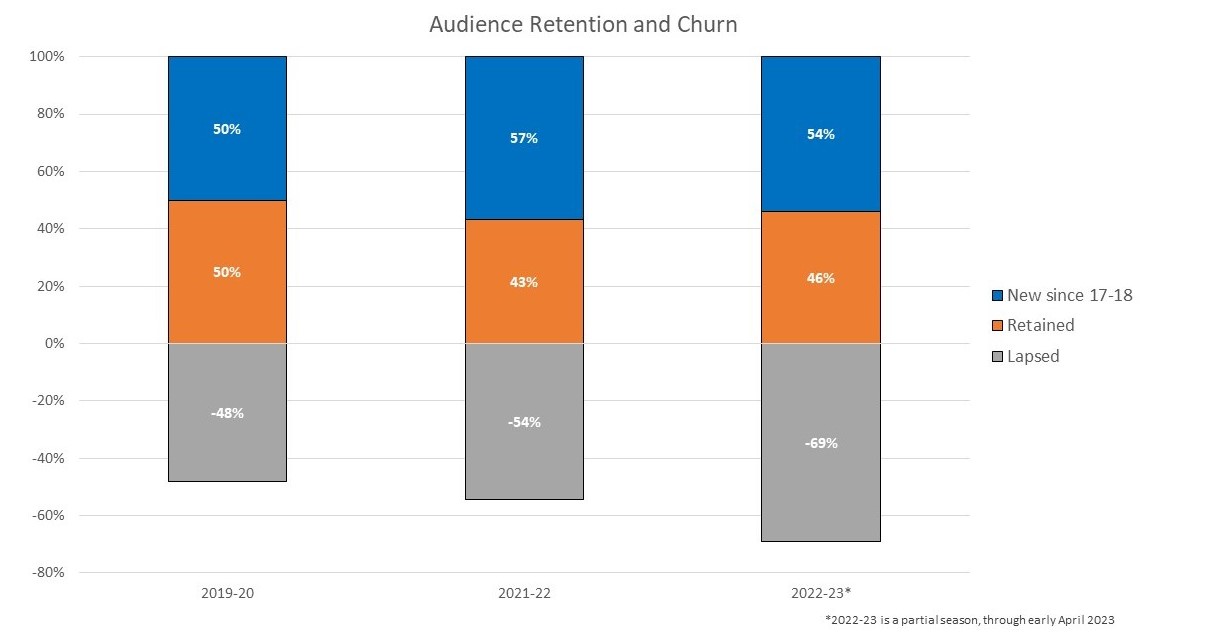
At the same time that theatres are seeing a large proportion of new attendees, they are also seeing a decline in subscriber numbers. Our 2022 Subscription Study found that theatres were hit the hardest when it came to subscription decline after the pandemic. In fact, subscription tickets declined from 39% of all tickets sold in 2018-19 and 2019-20, down to 32% of tickets sold in 2022-23.
Interestingly, the decline in the proportion of subscription tickets was made up for by an increase in the proportion of full-price single tickets. The proportion of discount and comp tickets remained steady. This suggests, as we’ve seen in previous studies, that discounts are not any more motivating for ticket buyers than they were before the pandemic.
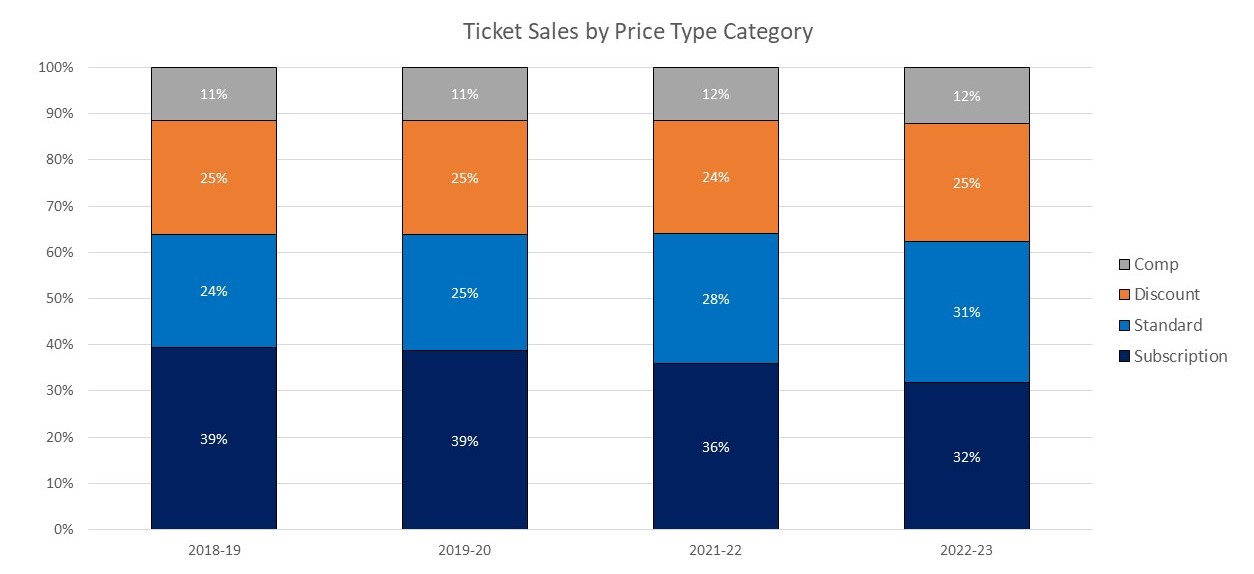
A recurring question we get from our theatre clients revolves around changes to the day of week that ticket buyers are attending. We know that audiences’ commuting patterns have changed, and there has been an expectation that attendance patterns would change accordingly, away from weekdays and especially away from Fridays. When we dug into this question, we found that in 2022-23, weekday performances had nearly rebounded, selling only about 2% less capacity than 2018-19 across all weekdays. Weekends have actually seen a larger drop in percent capacity sold, with Saturday Evenings down 7% and Sunday Matinees and Sunday Evenings both down 5%. This suggests that the shifts we expected in attendance patterns across the week have not materialized, and that weekdays are no harder to sell than they were pre-pandemic.
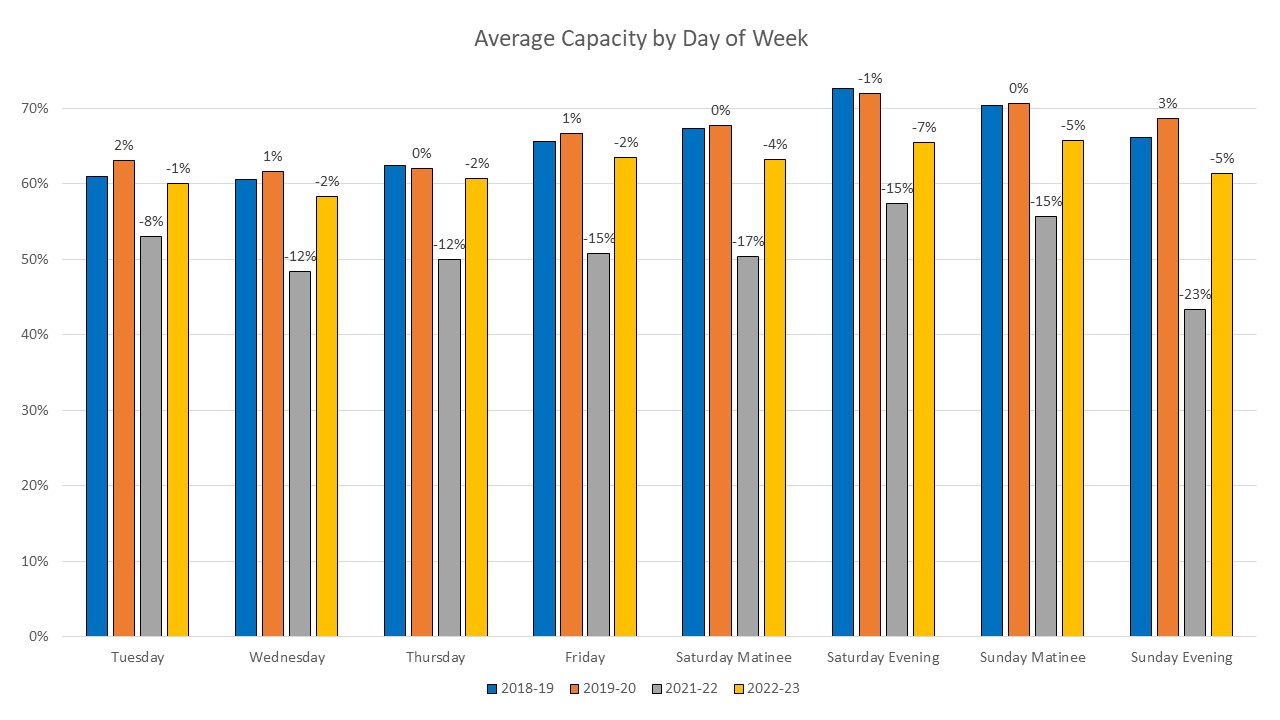
Finally, one of most common refrains we’ve heard across the arts and culture sector is that audiences are all buying later than they used to. As it turns out, this is probably the most common misconception that theatre marketers currently have about their audiences. Audiences are not buying later than before, and—in fact—a smaller proportion of single tickets were purchased in the final week leading up to a performance in 2022-23 (34%) than were purchased in the final week in 2018-19 (39%). This says that actually, a larger portion of the audience is buying earlier than they were before! However, when we add together the final two weeks of sales—the numbers are almost exactly the same, with 52% buying in the final two weeks before a performance in 2018-19, and 51% purchasing the same period in 2022-23. So, while individual organizations may see different results, as a whole, the timing of single ticket buyers has not significantly changed.
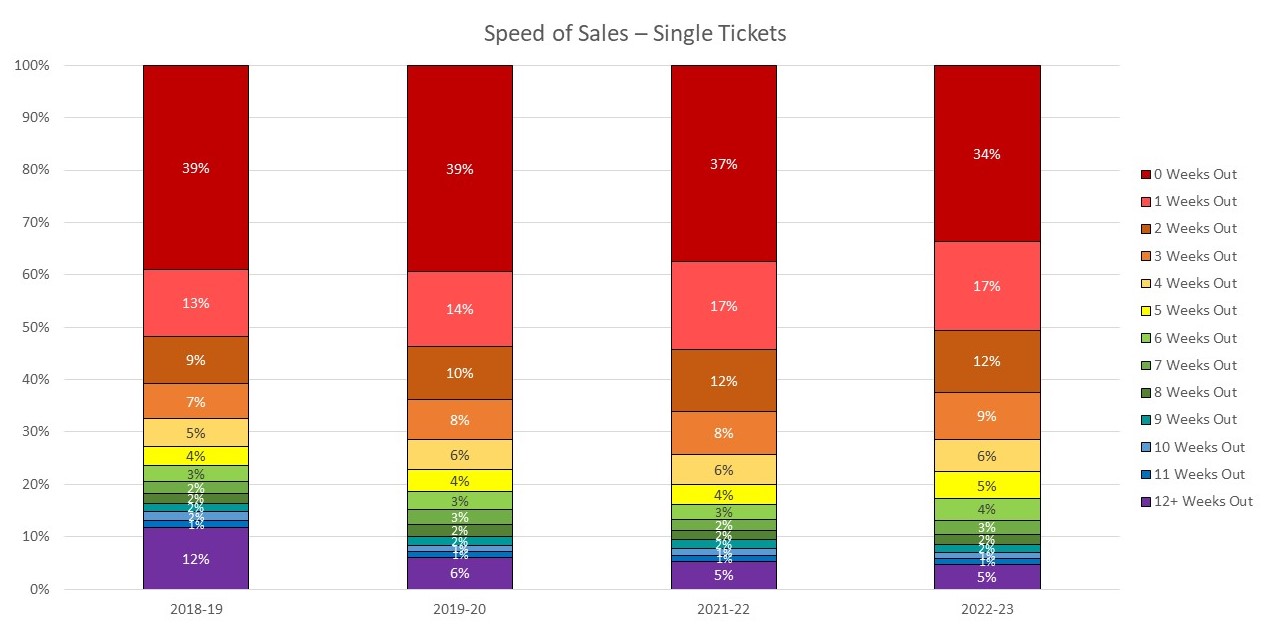
While these numbers don’t paint the brightest picture for the theatre industry, it’s important to recognize the opportunity in the struggle. Subscription sales may be decreasing, but the increase in new ticket buyers should be a source of hope. Theatre marketers should be tracking these changes in audience makeup and adjusting their strategies accordingly. How can theatres be inclusive and welcoming spaces, so that every first-time (or first-time-in-a-while) attendee has a great experience, and is excited to come back for the next production? If traditional subscriptions continue their decline, how can we find new ways to engender loyalty in single ticket buyers? How can theatres engage ticket buyers more fully and create a sense of belonging, without relying on traditional subscriptions? These are the questions that staff at theatres should be considering as they look to further the missions of their organizations into the future.
Learn About Your Audience
If you’d like to learn more about how your audience’s behavior has changed and what you can do about it, we can help. Our Customer Behavior Analyses are tailored to your individual organization and will answer the questions that are most pressing for you, while delivering actionable insights into your audience. The world has changed, make sure your organization is adapting too!

